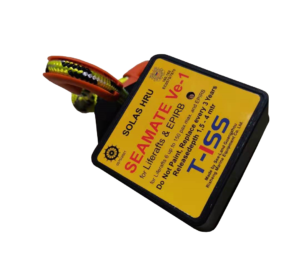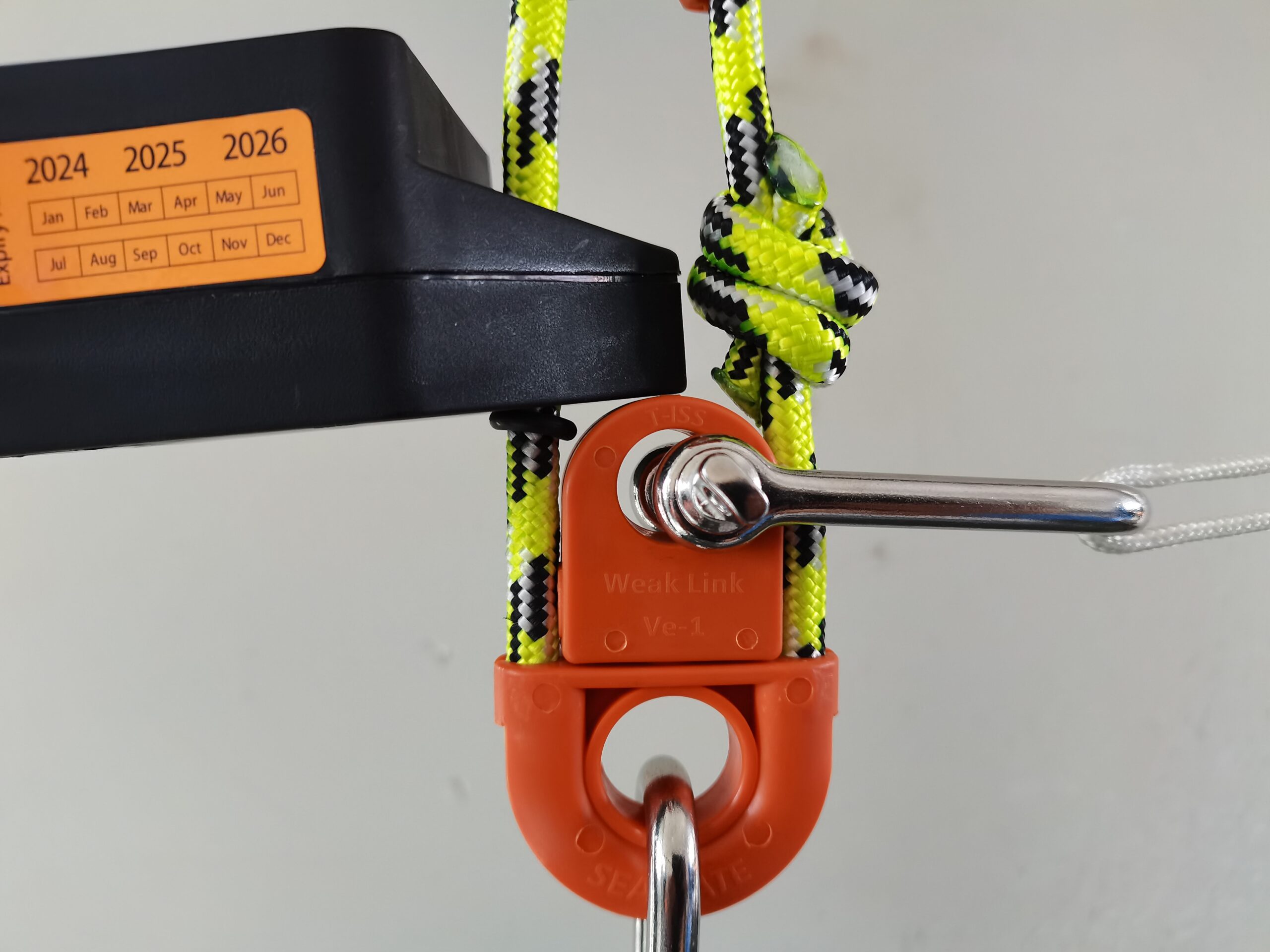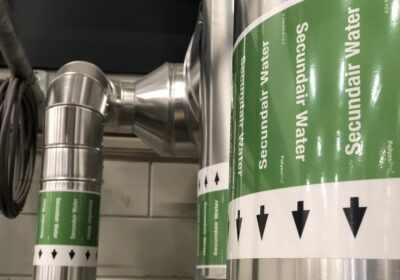In this article we will take a closer look at what Hydrostatic Release Units (HRU’s) are and the crucial role they play in case of an emergency.
What is a hydrostatic release unit?
A hydrostatic release unit or HRU is a pressure activated mechanism designed to automatically deploy a life raft, when certain conditions are met. In case a ship sinks, the HRU will activate and release the life raft on a depth between 1,5 and 4 meters. The pressure of the water against a diaphragm within the sealed casing causes a knife to cut through a rope. When this happens and it releases the life raft. The same principle applies on EPIRBs whereby the bracket which holds the EPIRB is released. EPIRB stands for ‘Emergency Position Indicating Radio Beacon’ and are used to alert search and rescue services in the event of an emergency.
There are two types of Hydrostatic Release Units:
- The disposable type, which are replaced every 2-4 years
- The type that has an unlimited life provided they are serviced and tested (normally every year).

Solas requirements for HRU’s
Because the HRU plays an important role in the auto release of life rafts and EPIRB’s, SOLAS 74 clearly specifies the requirements for construction and positioning of the HRU at a life raft:
- The Hydrostatic Release Unit acts as a connecting media between life raft container and ship deck, where it is stored.
- The HRU comes in action under the pressure of water exerted on HRU when a ship sinks below 4 meter of water level.
- The HRU consists of a sharp knife or chisel which is used to cut the strap. This strap is lashed over the container carrying life raft. Still, it holds the painter line at the weak link.
- The HRU is connected to the container through a lashing arrangement. This can be disengaged quickly by means of slip hook when launching the raft manually.
- The HRU is connected to a strong point on deck through a weak link.
- When a ship sinks, the HRU cuts the rope and the container floats to the surface of water.
- As the ship sinks further, the tension on the painter line causes the life raft to inflate out of the container.
- The tension acting on the weak link will cause it to break which frees the life raft from the ship.
The T-ISS SeaMate VE-1 HRU: certified high quality
The T-ISS SeaMate Ve-1 hydrostatic release unit is designed to operate in all conditions. From extreme heat to the polar environment. In the exceptional situation your ship sinks, the T-ISS SeaMate Ve-1 will automatically release your life rafts and EPIRB’s.
Our innovative design increased the reliability, which is why our T-ISS SeaMate Ve-1 has an expiry life of 3 years. This means you only replace the HRU every 3 years, instead of 2 years which is common. Besides the cost saving, this also reduces the environmental footprint. The T-ISS SeaMate Ve-1 hydrostatic release also fits on remote release systems. This enables you to release life rafts remotely.
You can download the Datasheet of the T-ISS SeaMate HRU Ve-1 here.
An EPIRB model is also available, delivered with the bolt and nut to connect the EPIRB to your ship.
For more information about the T-ISS SeaMate Ve-1 Hydrostatic Release Unit and to see its certificates, visit our productpage.



